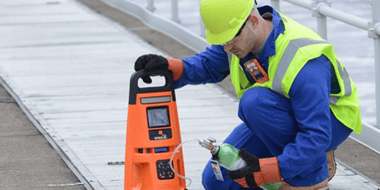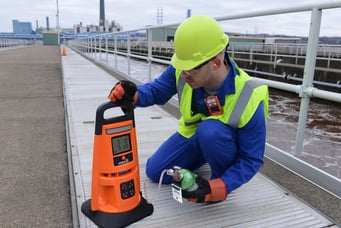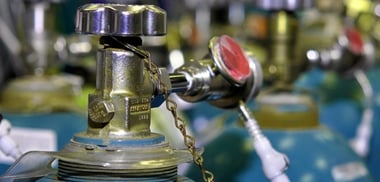It’s important to know that your gas monitors are functioning properly. To achieve this, you need to use calibration gas to help maintain your equipment. Calibration gas is a mixture of gases used as a standard when regulating gas monitors. Regular calibrations are an important part of your maintenance plan to ensure gas monitors can provide accurate readings.
During calibration, your monitor’s installed sensors are exposed to set concentrations of calibration gases. Based on the sensors’ responses, the monitor will self-adjust to compensate for declining sensor sensitivity. This decline in sensitivity naturally occurs as you use the sensors.
Since calibration is such an important process, you need to make sure your calibration gas can perform as expected. If you use incorrect calibration gas for your sensors or expired calibration gas, you may get an improper calibration. This may lead to the device displaying inaccurate readings or lead to a failure condition.
Calibration Gas Expiration Dates
.jpg?width=255&height=177&name=Calibration%20and%20Bump%20Testing%20(255x180).jpg)
The expiration date of calibration gas is listed on every Industrial Scientific calibration gas bottle. This date is based on the calibration gas shelf life. The concentration of gases in a cylinder may change over time due to the gas reacting to moisture, oxygen, or other chemicals. Once a cylinder is expired, you should no longer use it.
When talking about calibration gas, you might encounter some common questions: “How does calibration gas expire?” or “Why can’t I calibrate with expired gas?” The answers are quite simple. Let’s say you are about to perform your monthly calibration on one of your gas monitors. You gather your monitor, regulator, tubing, calibration cup, and your gas bottle. While connecting the regulator to the gas, you take a moment to read the gas bottle’s label and notice that the cylinder expired last month. Are you still going to calibrate with that bottle? It’s only a month past expiration, how bad could it possibly be?
Now let’s say you’re cleaning out your kitchen. You find an unopened carton of milk that’s been sitting in your refrigerator. You check the label on the carton and see that it expired last month. Are you still going to drink it? It’s only a month past expiration, how bad could it possibly be?
Milk decreases in quality over time (even while stored in a sealed container in a controlled environment), and a cylinder of calibration gas is no different. Reactive gases can degrade over time, and some do so faster than others. Over time, chemical reactions take place inside the cylinder (much like the carton of milk) and can alter the contents of the bottle. There is nothing that you or a manufacturer can do to extend calibration gas shelf life. We simply cannot control the nature of these reactive gases.
For these reasons, it is best to always use a gas cylinder that has not reached its expiration date. For safety purposes, you should never calibrate a gas detector with an expired gas cylinder. If you wouldn’t drink expired milk, why would you calibrate a lifesaving gas monitor with expired gas?
Calibration Gas Shelf Life Chart
The following chart shows the expected calibration gas shelf life of Industrial Scientific calibration gas:
| Group | Gas Type | Shelf Life Shelf life is based on Industrial Scientific's quality guarantee. Actual shelf life may be longer based on transit time. |
| Group I | LEL (Pentane, Methane, H2, etc.) | 28 months |
| O2 | 28 months | |
| CO | 28 months | |
| CO2 | 28 months | |
| Group II | H2S | 19 months |
| SO2 | 19 months | |
| NH3 | 14 months | |
| NO | 14 months | |
| HCN | 14 months | |
| Group III | Cl2 | 7 months |
| HCl | 9 months | |
| NO2 | 4 months | |
| PH3 | 14 months | |
| Group IV | 4-gas bump cylinder | 9 months |
| CO bump cylinder | 9 months |
Note: Group I as well as H2S, NO2, and SO2 from Group II can be used in a combination cylinder.
If using a combination cylinder, the expiration date defaults to the gas that will expire first.
Gas monitors require some basic maintenance, like daily bump tests, to maintain proper performance. Refer to the chart above or this calibration gas reference tool for a more comprehensive breakdown of shelf life across various types of gas. You also have disposal and replenishment options available to you to maintain safety. It’s important to properly dispose of calibration gas cylinders and to make sure you always have fresh calibration gas with auto replenishment.



